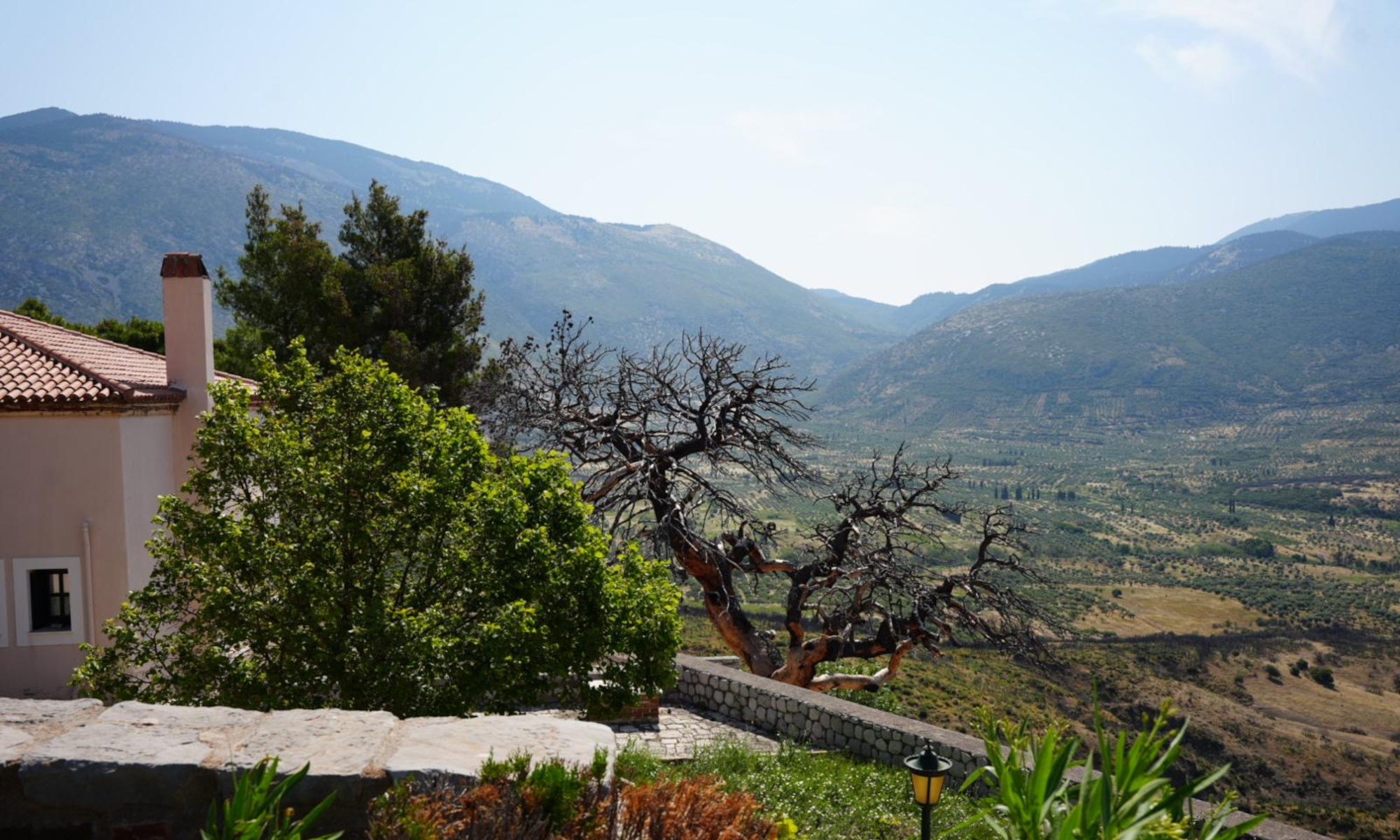by Annalisa Jenkins
The pathway into the Hosios Loukas monastery is lined with the blackened skeletons of pine trees. They are remnants of a 2023 wildfire that breached the outer walls of the monastery, forced an evacuation, and came within inches of lighting the church aflame.

The trees stand in memoriam of what the monastery shopkeeper Yannis Loukas calls “one of the worst days in the life of this monastery.” The fire incinerated the monastery’s potato fields and hospitalized a monk who didn’t evacuate.
But it was the vibrance below the burnt trees that drew my attention. In the two years since the fire, wild grasses and pink and white flowers have covered the dry ground lining the path: a pop of color amongst ashy yellows and browns.


Over the two days of our trip into the mountains of central Greece—in the monastery; among the ruins of Delphi; and at the site of a Nazi massacre in Distomo—the line between the past and the present blurs. Within a busy corridor of tourism, each of our hosts is grappling with how to honor their history in the face of great transition.
Father Anthimos, a monk who recently moved to Hosios Loukas, expressed mixed feelings about his reassignment. He came from Mount Athos, a traditional monastery that is closed to all but a few invited male visitors. There, he felt he was living a thousand years in the past. Our guide Sophia Theona explained that monasteries like Hosios Loukas, which invite tourists, are “not usually where a monk wants to be because they have to act as hosts, which was not their calling.”
Hosios Loukas has preserved some of the monastic antiquity that Father Anthimos described. Its thick stone walls block the view of the road leading into it and muffle any sounds of traffic. The soft chirping of cicadas and birds, trickling mountain spring and well-maintained gardens create a bucolic peace. Gold embossed iconography lines the walls of the church and monks wear long black robes, a uniform that has remained unchanged for centuries.
Within this image of the Byzantine empire, however, there are clear reminders of touristic modernity. A large black speaker is tucked into a windowsill beneath a painted bible scene; a small shop off the courtyard sells visitors honey and bars of nougat; signs in English hang on the stall door of a bathroom for women (who historically would not have been allowed into the monastery); a blonde toddler cries to her parents. Tourists hoping to learn about this Byzantine church have, inherently, changed its presence.
After leaving the monastery, we drove to nearby Distomo, where, in 1944 the Nazis massacred 228 of the town’s 1600 residents. Amalia Papaioannou, head of the Distomo massacre museum and granddaughter of survivors, described how she feels a deep “duty to preserve the memory” of the tragedy. Growing up in the 1970s, Papaiannou was surrounded by stories of the massacre—“it’s not just a memory, this story being passed down has formed an identity,” she said. As the last generation of survivors passes away, her biggest fear is that this memory and identity will die with them. It seemed that for Papaioannou, our presence helped to keep the story alive—she thanked us deeply for listening.
How do we honor memory while continuing to heal and live in the present? In the documentary we watched, one survivor, speaking nearly 60 years after the tragedy, lamented that “Distomo still hasn’t recovered. It still hasn’t recovered the peace and colours I remembered.” Is it possible to recover peace when, as Papaioannou said, her community’s identity is formed by a tragic memory?
For each place our class played a different role—an opportunity for the preservation of history or the very thing against which they needed to preserve. Each stands on the precipice of a great transition.
The Hosios Loukas fire was the first that Yannis Loukas had seen in decades working at the monastery. As climate change brings intensifying heat and drought to Greece, it is likely that more will follow.
